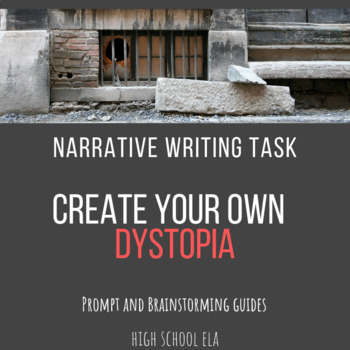Dystopian Literature Narrative Assignment: Write your own Dystopia
- Word Document File
What educators are saying
Description
Studying Dystopian literature in your class? Assess your students understanding of Dystopian qualities and practice mastery of the narrative writing task by asking your students to craft a Dystopia of their own. Nurture creativity and cultural awareness by encouraging your students to examine today's societal tendencies. Beg the question... what if?
Students Will:
-Identify dystopian and literary elements (dystopian: technology, conformity, figureheads, etc. Literary: theme, character development, setting, etc.)
-Craft a short narrative
This download comes with:
-Narrative Writing Prompt
-Brainstorm guide for Dystopian elements
-Brainstorm guide for literary elements
Looking to incorporate Dystopian elements worksheets throughout your study?
Related Products
⭐ Dystopian Elements Worksheets to Supplement Novel Study or Short Stories


